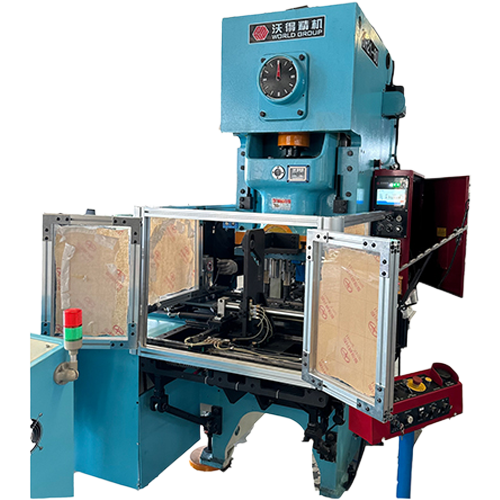The Future of Metalworking: Exploring Diverse Applications of Embossing and Hemming (Embossing) Equipment
The Future of Metalworking: Exploring the Versatility of Step Pressing and Bent Edge (Embossing) Machines
Integration of automation and robotics: It is likely that more automation applications will emerge in the future of metalworking and that robotics will be incorporated into threading and edging machines. This convergence will lead to greater precision, greater efficiency and a reduced reliance on manual operations, thereby increasing production efficiency and reducing production costs.
Smart Connected Machines: In the future, punching and stamping machines are likely to become more intelligent and connected. They may be equipped with advanced sensors and monitoring systems that enable real-time data analysis, predictive maintenance, and remote monitoring. This interconnectivity will improve the overall efficiency of the equipment and reduce downtime due to unexpected failures.
Advanced Materials and Processes: With the continuous research and development of new materials and the continuous advancement of metal processing technology, thread processing and flanging equipment need to be adjusted accordingly to process these materials effectively. For example, high-strength alloys and composites may need to be equipped with more advanced molds and control systems to maintain precision and structural integrity during the molding process.
Energy efficiency: With the increasing emphasis on sustainable development and energy conservation, future threading and stamping machines are likely to be designed with a greater emphasis on energy efficiency. Manufacturers may explore ways to optimize machine energy consumption without reducing performance.
Personalization and flexibility: As market demands become more diverse and specialized, the metalworking industry will seek equipment that can meet the needs of multiple products and personalized specifications. Future threading and flanging equipment may offer greater flexibility, enabling quick and easy tool changes to accommodate different product designs and size requirements.
Integration with computer-aided design (CAD) and simulation software: Future piercing and flanging equipment will be able to seamlessly connect with CAD and simulation software. This integration will enable engineers and manufacturers to simulate and test the molding process virtually before actual production, reducing the number of prototypes required and shortening product development cycles.

Recommended Products


 EN
EN
 中文简体
中文简体 English
English













